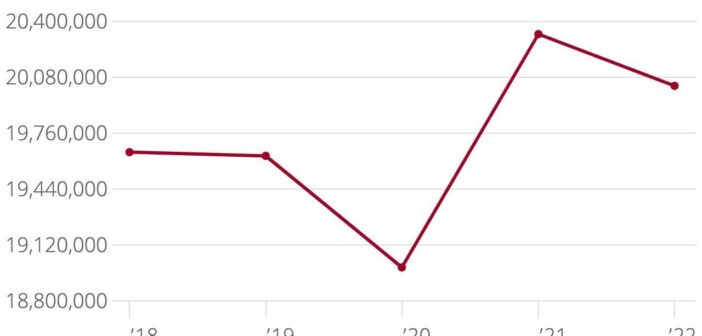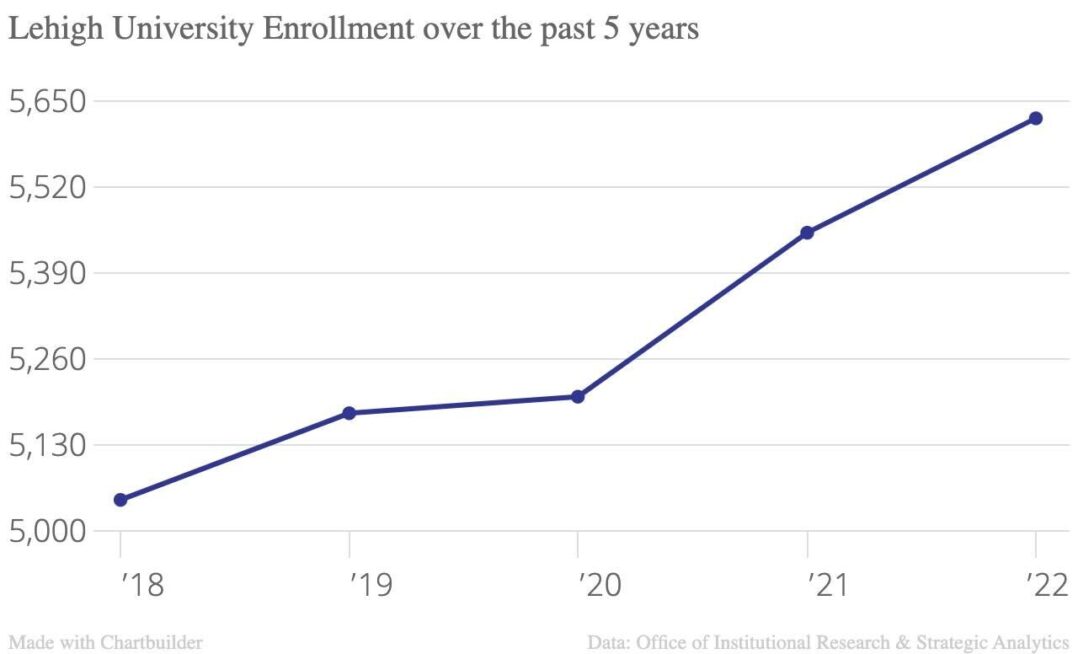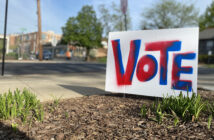College enrollment is shrinking across the United States.
For the spring 2022 term, overall enrollment across public and private colleges in the U.S. fell by 1.3 million students, down 7.4% since 2020, according to the National Student Clearinghouse Research Center. For fall 2022, the enrollment rate decreased, but less so than spring 2022.
William Gaudelli, dean of the College of Education and vice provost for innovation and education at Lehigh, said he credits this decrease to a greater trend in deinstitutionalization across the country.
“Institutions that once held a centerplace in American society have lost some credence, some reputation, some standing,” Gaudelli said.
Gaudelli expects a greater trend in deinstitutionalization will affect all sectors, particularly education and higher education. He said college-aged students have more academic and career options than ever before.
Though many universities still hold a great deal of credibility, Gaudelli said students now have the option to do some version of self-study or online learning, both of which could be contributing to the decrease in enrollment.
He said the increase in options calls for institutions to make greater changes. To him, this means offering credentials of various kinds at lower price points to a wider array of people.
Some institutions have actively responded to this, however he said others will have prestige on their side, and it is unlikely that change will be necessary for them.
Changes to combat low enrollment can also mean institutional partnerships.
“In some ways, the higher education system is overbuilt because there are so many colleges and universities across the country,” Gaudelli said. “This could result in more cooperations and jointures between institutions. We see that already happening.”
He said another option for students is obtaining credentials directly from employers or going straight into the workforce without pursuing higher education.
“Amazon and Google are offering their own credentials, as are many other service providers,” Gaudelli said. “I think that has changed the landscape and given people a wider array of options.”
He said it is the responsibility of higher education institutions to make adjustments and meet the needs of potential students.
Tammy Adelsberger, secondary school counselor at Liberty High School in Bethlehem, said they have seen a decline in the number of students choosing to apply to and attend college.
Data from Liberty High School indicates that 53% of the school’s seniors applied to at least one college in 2019 compared to only 41% in 2021.
Adelsberger said some of this decline can be attributed to the COVID-19 pandemic. Many students’ parents lost their jobs, and some students had to make arrangements to supplement their family’s income.
“Many of our students went off to work during (COVID-19), and when we offered the hybrid schedule … many of them continued to work part-time,” Adelsberger said.
Adelsberger said she believes, especially after COVID-19, working students are seeing they can not only make an income, but also advance in those career opportunities. As a result, more students are choosing to continue working after high school.
She said exposure to the workforce and multiple pathways — besides attending college — has always been a priority at Liberty.
“I think, maybe as a result of (COVID-19) and inflation in the economy, many students and families are now being more mindful of how their time and money is best spent,” Adelsberger said.
Bruce Bunnick, director of admissions at Lehigh, said the university has not been affected by enrollment declines.
He said Lehigh has experienced a 22% increase in total applications over the past three years, despite challenges with COVID-19.
Bunnick believes a national trend of enrollment decline can be attributed to a number of factors, such as COVID-19 disruptions, test-optional admission policies, a weak economy and high inflation.
“Some are applying to more, rather than fewer, colleges,” Bunnick said. “Others are opting not to pursue college at all.”
He said a disproportionate number of students in the latter category come from under-resourced and underrepresented communities, including international students.
Gaudelli said the future of higher education and changes in college applications is uncertain. However, it is clear that colleges and universities will have to make some adjustments.
“(Colleges are) going to be forced to play in a more customer service realm than they once were,” Gaudelli said. “It used to be that you would wait for the consumers to come, and they would arrive at your doorstep because you were the only game in town. That is no longer the case.”







Comment policy
Comments posted to The Brown and White website are reviewed by a moderator before being approved. Incendiary speech or harassing language, including comments targeted at individuals, may be deemed unacceptable and not published. Spam and other soliciting will also be declined.
The Brown and White also reserves the right to not publish entirely anonymous comments.